Growing Pink Radishes at Home might sound like a whimsical dream, but trust me, it’s an incredibly rewarding and surprisingly simple DIY project! Have you ever imagined plucking vibrant, rosy radishes straight from your own backyard, adding a pop of color and a burst of peppery flavor to your salads? Well, stop dreaming and start planting!
Radishes have a rich history, dating back to ancient times, with evidence suggesting they were cultivated in Egypt even before the pyramids were built. They’ve been a staple in various cultures, valued not only for their taste but also for their medicinal properties. But beyond their historical significance, growing your own radishes offers a connection to the earth and a sense of accomplishment that’s hard to beat.
In today’s fast-paced world, taking a moment to nurture something from seed to harvest can be incredibly therapeutic. Plus, let’s be honest, store-bought radishes just don’t compare to the crisp, fresh flavor of homegrown ones. This DIY guide will equip you with all the essential tricks and hacks to successfully growing pink radishes at home, even if you have limited space or gardening experience. We’ll cover everything from choosing the right variety to ensuring optimal soil conditions, so you can enjoy a bountiful harvest of these delightful little gems. Get ready to get your hands dirty and experience the joy of homegrown goodness!
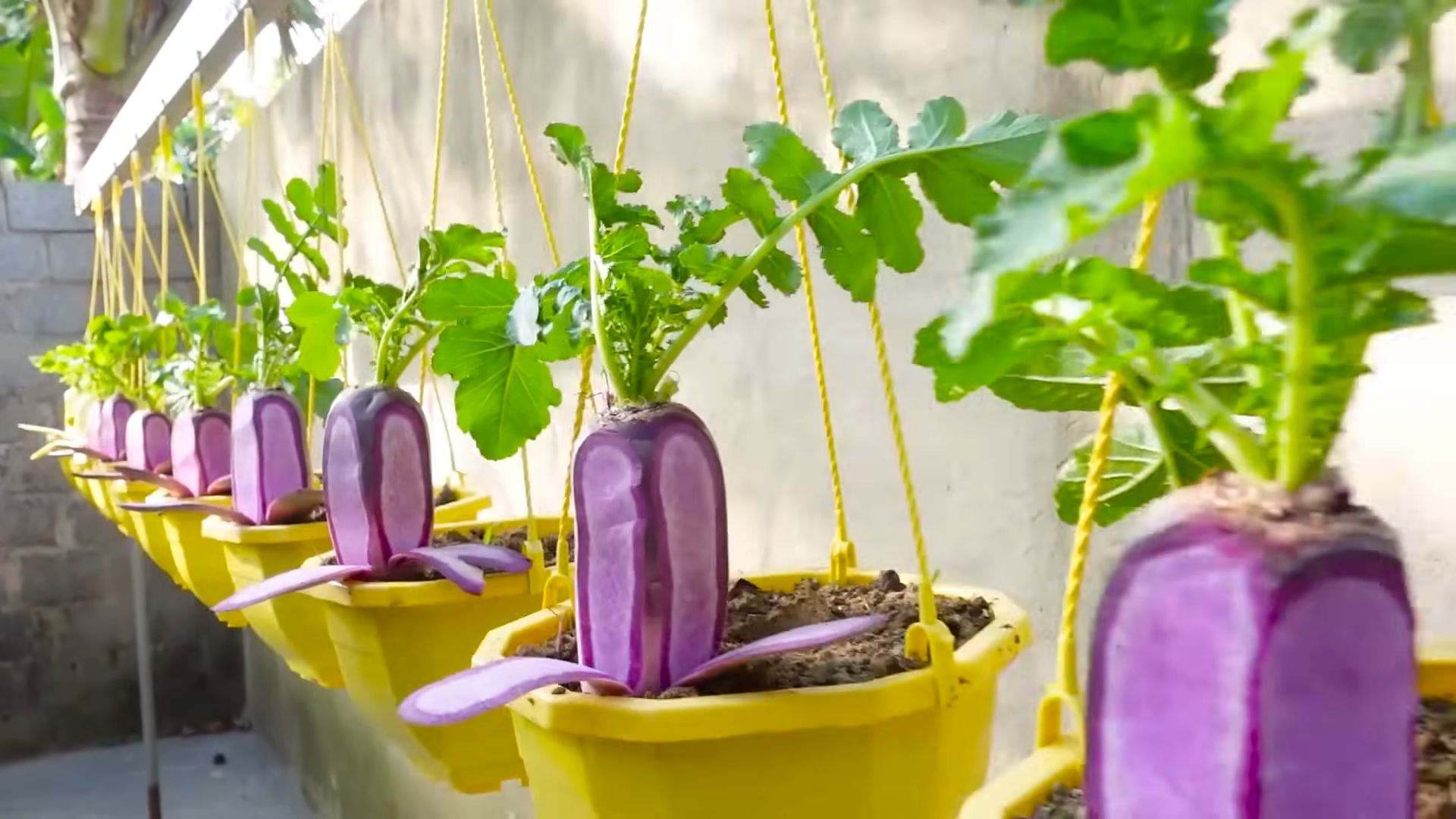
Growing Gorgeous Pink Radishes at Home: A DIY Guide
Hey there, fellow gardening enthusiasts! I’m so excited to share my secrets for growing vibrant, delicious pink radishes right in your own backyard (or even on your balcony!). Radishes are incredibly rewarding because they grow super fast, making them perfect for impatient gardeners like me. Plus, that peppery bite adds a fantastic zing to salads and snacks. Let’s dive in!
What You’ll Need
Before we get our hands dirty, let’s gather our supplies. Here’s a checklist to make sure you’re all set:
* Radish Seeds: Obviously! Look for varieties specifically labeled as “pink” or “French Breakfast” for that beautiful rosy hue. I personally love the ‘French Breakfast’ variety for its mild flavor and elongated shape.
* Potting Soil (or Garden Soil): If you’re planting in containers, use a good quality potting mix. If you’re planting directly in the ground, make sure your garden soil is loose and well-draining. Amending it with compost is always a good idea!
* Gardening Gloves: Protect those precious hands!
* Hand Trowel or Small Shovel: For digging those little planting holes.
* Watering Can or Hose: For keeping your radishes happy and hydrated.
* Optional: Row covers or netting to protect against pests.
* Optional: Fertilizer specifically formulated for root vegetables.
Choosing the Right Location
Radishes are pretty adaptable, but they do have some preferences. Here’s what to keep in mind when choosing a spot for your pink beauties:
* Sunlight: Radishes need at least 6 hours of sunlight per day. The more sun, the better!
* Soil: Well-draining soil is crucial. Radishes don’t like to sit in soggy soil, as this can lead to rot.
* Temperature: Radishes prefer cooler temperatures (60-70°F). This makes them ideal for spring and fall planting. If you live in a warmer climate, you can still grow them, but you’ll need to provide some shade during the hottest part of the day.
* Space: Radishes don’t need a ton of space, but they do need enough room to develop their roots. Aim for about 1-2 inches between plants.
Planting Your Radish Seeds
Okay, now for the fun part! Let’s get those seeds in the ground.
1. Prepare the Soil: Whether you’re using a container or planting directly in the ground, make sure the soil is loose and free of any large clumps. If you’re using garden soil, till it to a depth of about 6 inches.
2. Create Furrows: Use your hand trowel or shovel to create shallow furrows in the soil, about 1/2 inch deep and 1-2 inches apart.
3. Sow the Seeds: Sprinkle the radish seeds evenly along the furrows. Don’t overcrowd them!
4. Cover the Seeds: Gently cover the seeds with a thin layer of soil.
5. Water Thoroughly: Water the soil gently but thoroughly. You want to make sure the soil is moist but not waterlogged.
6. Label Your Rows: It’s always a good idea to label your rows so you know what you’ve planted!
Caring for Your Radishes
Radishes are relatively low-maintenance, but they do need a little TLC to thrive.
1. Watering: Keep the soil consistently moist, but not soggy. Water deeply whenever the top inch of soil feels dry to the touch.
2. Thinning: Once your radish seedlings emerge (usually within a few days), you’ll need to thin them out. This means removing some of the seedlings so that the remaining plants have enough room to grow. Aim for about 1-2 inches between plants. Don’t just pull them out! Gently snip the unwanted seedlings at the soil line with scissors to avoid disturbing the roots of the remaining plants.
3. Weeding: Keep the area around your radishes free of weeds. Weeds can compete with your radishes for nutrients and water.
4. Fertilizing (Optional): If your soil is poor, you can fertilize your radishes with a fertilizer specifically formulated for root vegetables. Follow the instructions on the fertilizer package. I usually skip this step unless my plants look like they’re struggling.
5. Pest Control (Optional): Radishes can be susceptible to pests like flea beetles and root maggots. If you notice any signs of pest damage, you can use row covers or netting to protect your plants. You can also use organic pest control methods, such as insecticidal soap or neem oil.
Harvesting Your Radishes
This is the moment we’ve all been waiting for! Radishes are typically ready to harvest in about 3-4 weeks after planting.
1. Check for Maturity: Gently brush away the soil around the base of a few radishes to check their size. They should be about 1 inch in diameter.
2. Harvest Carefully: Gently pull the radishes out of the ground by their tops. If they’re difficult to pull, you can loosen the soil around them with a hand trowel.
3. Wash and Store: Wash the radishes thoroughly and remove the tops and roots. Store them in a plastic bag in the refrigerator for up to a week.
Troubleshooting
Even with the best planning, sometimes things don’t go exactly as expected. Here are a few common problems you might encounter when growing radishes, and how to fix them:
* Radishes are too spicy: This is often caused by hot weather or inconsistent watering. Make sure to water your radishes regularly and provide some shade during the hottest part of the day.
* Radishes are small and stunted: This can be caused by overcrowding, poor soil, or lack of sunlight. Make sure to thin your radishes properly, amend your soil with compost, and provide them with at least 6 hours of sunlight per day.
* Radishes are cracked: This is usually caused by inconsistent watering. Make sure to water your radishes regularly and evenly.
* Radishes are woody or pithy: This can be caused by letting them grow too large. Harvest your radishes when they are about 1 inch in diameter.
* Pests are attacking my radishes: Use row covers or netting to protect your plants from pests. You can also use organic pest control methods, such as insecticidal soap or neem oil.
Enjoying Your Harvest
Now that you’ve harvested your beautiful pink radishes, it’s time to enjoy them! Here are a few of my favorite ways to eat them:
* In salads: Radishes add a peppery bite and a beautiful pop of color to salads.
* As a snack: Slice them thinly and eat them with a sprinkle of salt.
* On toast: Spread some butter on toast and top with thinly sliced radishes and a sprinkle of sea salt.
* Pickled: Pickled radishes are a delicious and tangy condiment.
* Roasted: Roasting radishes mellows out their flavor and makes them surprisingly sweet.
Bonus Tip: Succession Planting
To enjoy a continuous harvest of radishes throughout the growing season, try succession planting. This means planting a new batch of seeds every 2-3 weeks. This way, you’ll always have fresh radishes on hand!
Growing Radishes in Containers
If you don’t have a garden, don’t worry! You can easily grow radishes in containers. Here’s what you need to know:
* Choose the Right Container: Select a container that is at least 6 inches deep and has drainage holes.
* Use Potting Mix: Use a good quality potting mix, not garden soil.
* Planting: Follow the same planting instructions as for planting in the ground.
* Watering: Water more frequently than you would if planting in the ground, as containers tend to dry out more quickly.
* Fertilizing: Fertilize your radishes every 2-3 weeks with a fertilizer specifically formulated for root vegetables.
Experiment with Different Varieties
Don’t be afraid to experiment with different varieties of radishes! There are so many different colors, shapes, and flavors to choose from. Some of my other favorites include:
* Cherry Belle: A classic red radish with a mild flavor.
* Easter Egg: A mix of red, pink, purple, and white radishes.
* Black Spanish: A large, black radish with a strong, pungent flavor.
* Watermelon Radish: A beautiful radish with a green exterior and a bright pink interior.
Growing your own pink radishes is a fun and rewarding experience. With a little bit of care and attention, you can enjoy a bount
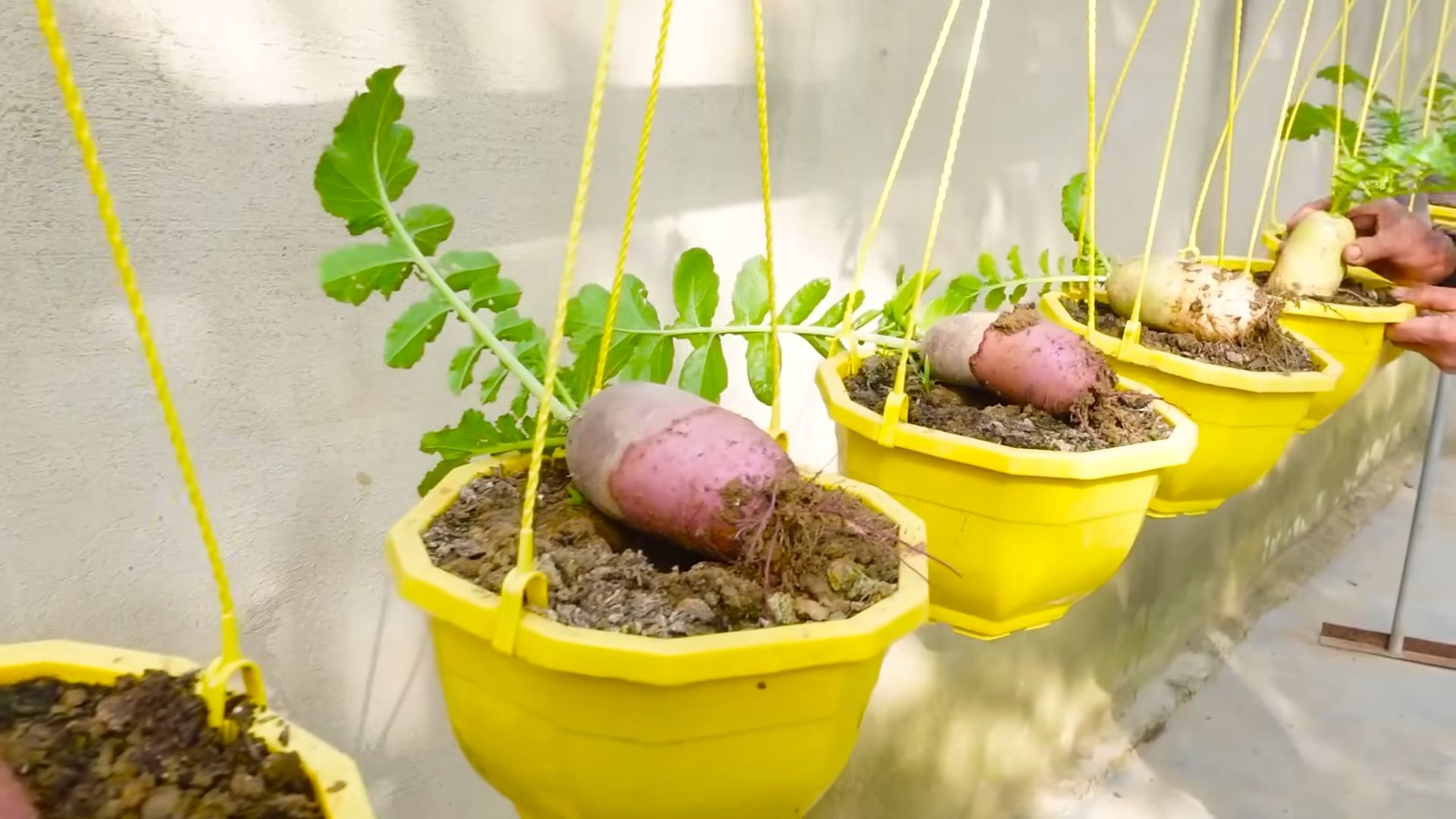
Conclusion
So, there you have it! Growing pink radishes at home is not only achievable but also surprisingly rewarding. Forget those bland, store-bought radishes that lack the vibrant color and peppery punch you crave. With a little effort and these simple steps, you can cultivate your own crop of crisp, beautiful pink radishes, bursting with flavor and ready to add a delightful touch to your salads, snacks, and side dishes.
Why is this DIY trick a must-try? Because it puts you in control. You dictate the quality of the soil, the amount of sunlight, and the watering schedule, ensuring that your radishes are grown in the best possible conditions. This translates to a superior taste and texture that you simply can’t find in commercially grown varieties. Plus, there’s an undeniable satisfaction in harvesting something you’ve nurtured from seed to table. It’s a connection to nature, a sustainable practice, and a delicious way to enhance your meals.
But the fun doesn’t stop there! Feel free to experiment with different radish varieties. While we’ve focused on pink radishes, there are countless other colors and shapes to explore. Try growing French Breakfast radishes for their mild flavor and elongated shape, or Black Spanish radishes for a more intense, pungent bite. You can also adjust the planting time to extend your harvest season. Succession planting, where you sow new seeds every few weeks, will ensure a continuous supply of fresh radishes throughout the spring and fall.
Consider companion planting as well. Radishes are known to deter certain pests, making them excellent companions for carrots, lettuce, and cucumbers. Planting them together can create a mutually beneficial ecosystem in your garden. You can also use radish leaves in salads or stir-fries, adding a peppery kick to your dishes. Don’t let any part of your harvest go to waste!
Growing pink radishes at home is more than just a gardening project; it’s an opportunity to connect with nature, enhance your culinary skills, and enjoy the freshest, most flavorful radishes imaginable. It’s a simple, satisfying, and sustainable way to add a touch of homegrown goodness to your life.
We wholeheartedly encourage you to give this DIY trick a try. It’s easier than you might think, and the rewards are well worth the effort. Once you’ve harvested your first batch of homegrown pink radishes, we’d love to hear about your experience! Share your photos, tips, and recipes in the comments below. Let’s build a community of radish enthusiasts and inspire others to embrace the joy of growing their own food. Happy gardening!
Frequently Asked Questions (FAQ)
What is the best time of year to plant pink radishes?
Radishes are cool-season crops, meaning they thrive in cooler temperatures. The best time to plant them is in early spring or late summer/early fall. In spring, plant as soon as the soil can be worked, typically a few weeks before the last expected frost. For a fall harvest, plant about 4-6 weeks before the first expected frost. Avoid planting during the hottest months of summer, as the heat can cause the radishes to become tough and bitter.
How much sunlight do pink radishes need?
Radishes need at least 6 hours of sunlight per day to grow properly. Choose a location in your garden that receives full sun for the majority of the day. If you live in a particularly hot climate, some afternoon shade can be beneficial to prevent the radishes from bolting (going to seed prematurely).
What kind of soil is best for growing pink radishes?
Radishes prefer loose, well-drained soil that is rich in organic matter. Amend your soil with compost or well-rotted manure before planting to improve its fertility and drainage. Avoid heavy clay soils, as they can become compacted and hinder root development. The ideal soil pH for radishes is between 6.0 and 7.0.
How often should I water my pink radishes?
Radishes need consistent moisture to grow quickly and develop crisp, flavorful roots. Water deeply and regularly, especially during dry periods. Aim to keep the soil consistently moist but not waterlogged. A good rule of thumb is to water when the top inch of soil feels dry to the touch.
How long does it take for pink radishes to mature?
One of the great things about radishes is that they are quick to mature. Most varieties are ready to harvest in just 3-4 weeks after planting. Check the seed packet for the specific maturity time of the variety you are growing.
How do I know when my pink radishes are ready to harvest?
The best way to determine if your radishes are ready to harvest is to check their size. Most pink radish varieties are ready to harvest when they are about 1 inch in diameter. Gently loosen the soil around the radish and pull it out of the ground. If the radish is too small, leave it in the ground for a few more days.
What causes radishes to crack or split?
Cracking or splitting in radishes is usually caused by inconsistent watering. If the soil dries out and then is suddenly saturated with water, the radishes can grow too quickly and the skin can crack. To prevent this, water regularly and consistently, especially during dry periods.
Why are my radishes all leaves and no root?
If your radishes are producing lots of leaves but small or non-existent roots, it could be due to a few factors. Insufficient sunlight, overcrowding, or soil that is too rich in nitrogen can all contribute to this problem. Make sure your radishes are getting at least 6 hours of sunlight per day, thin them out to the recommended spacing, and avoid over-fertilizing with nitrogen-rich fertilizers.
Can I eat the radish greens?
Yes, radish greens are perfectly edible and nutritious! They have a peppery flavor similar to the radish root. You can use them in salads, stir-fries, soups, or pesto. Just be sure to wash them thoroughly before using.
How do I store harvested pink radishes?
To store harvested radishes, remove the greens and wash the roots. Place the radishes in a plastic bag or container lined with a damp paper towel. Store them in the refrigerator for up to 1-2 weeks. The greens can be stored separately in a plastic bag in the refrigerator for a few days.

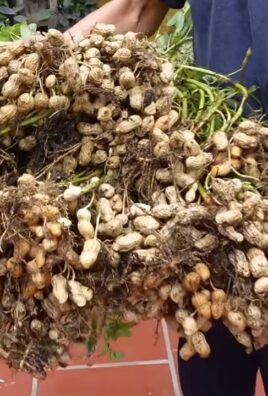
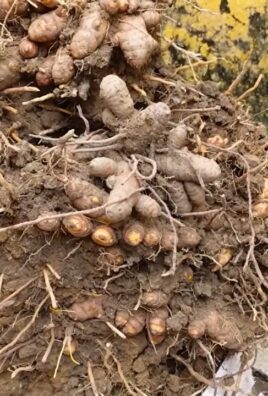
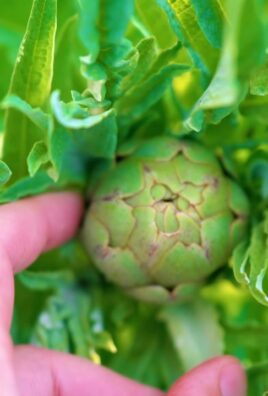
Leave a Comment